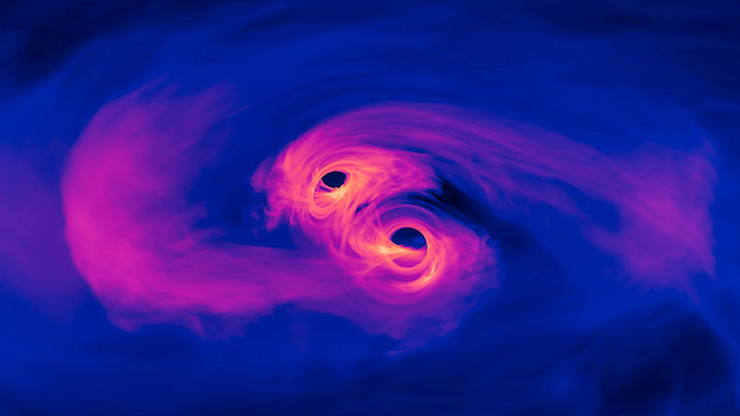What can ripples in spacetime reveal about black holes? Quite a bit, it turns out
"Our findings pave the way for rigorous examinations of black holes and the exploration of new physics in gravity."

Cosmic echoes from some of the universe's most violent collisions are far more nuanced than scientists had realized, according to new research.
Like the lingering chime of a struck bell, tiny ripples in the fabric of spacetime are created when massive objects like black holes spiral toward each other and merge into a single, larger black hole. These ripples are known as "gravitational waves," and astronomers rely on theoretical models to decode the waves' faint signals, both in the final moments leading up to the merger and in the aftermath.
In theory, as the newly formed black hole behemoth settles into a stable, spinning form, it should radiate a distinctive pattern of gravitational waves — known to astronomers as quasinormal modes (QNMs) — which are shaped by the black hole's intrinsic properties, such as its mass and spin.
Astronomers have long expected these waveforms to follow a predictable pattern, with each mode gradually fading over time — much like the diminishing chime of a struck bell. But in 1997, theorists identified a puzzling exception: one particular mode appeared out of sync, an inconsistency that couldn't be explained by existing models. This anomaly raised the possibility that QNMs do not evolve independently, but instead interact in complex, nonlinear ways, suggesting the internal structure of black holes, and indeed the gravitational waves they emit, might be far more complex than previously thought.
Now, new theoretical work by Hayato Motohashi, an astrophysicist at the University of Tokyo Metropolitan University in Japan, builds on the 30-year mystery. By analyzing the behavior of multiple such QNMs, Motohashi found that the original "dissonance" wasn't a cosmic glitch but rather the result of two modes interacting with each other. This kind of interaction, according to Motohashi, happens regularly across many modes, suggesting it could be a fundamental feature of black hole physics.
Such coupled cosmic ringing is more than just a mathematical curiosity, scientists say. Because gravitational wave signals, including QNMs, are shaped by the geometry of the black hole's spacetime — the "fabric" of the universe surrounding it — analyzing the interactions between modes could lead to more precise "maps" of the black holes themselves.
For example, just as a bell ringing slightly out of tune might indicate a crack or imperfection, deviations in gravitational wave frequencies can point to asymmetries in the black hole's shape. These imperfections, which scientists expect decay over time but leave a temporary imprint on the QNMs, could even reveal signs of new physics, according to the new study.
Get the Space.com Newsletter
Breaking space news, the latest updates on rocket launches, skywatching events and more!
"Our findings pave the way for rigorous examinations of black holes and the exploration of new physics in gravity," Motohashi wrote in the new study.
This research is described in a paper published April 9in the journal Physical Review Letters.
Join our Space Forums to keep talking space on the latest missions, night sky and more! And if you have a news tip, correction or comment, let us know at: community@space.com.

Sharmila Kuthunur is a Seattle-based science journalist focusing on astronomy and space exploration. Her work has also appeared in Scientific American, Astronomy and Live Science, among other publications. She has earned a master's degree in journalism from Northeastern University in Boston. Follow her on BlueSky @skuthunur.bsky.social
You must confirm your public display name before commenting
Please logout and then login again, you will then be prompted to enter your display name.
